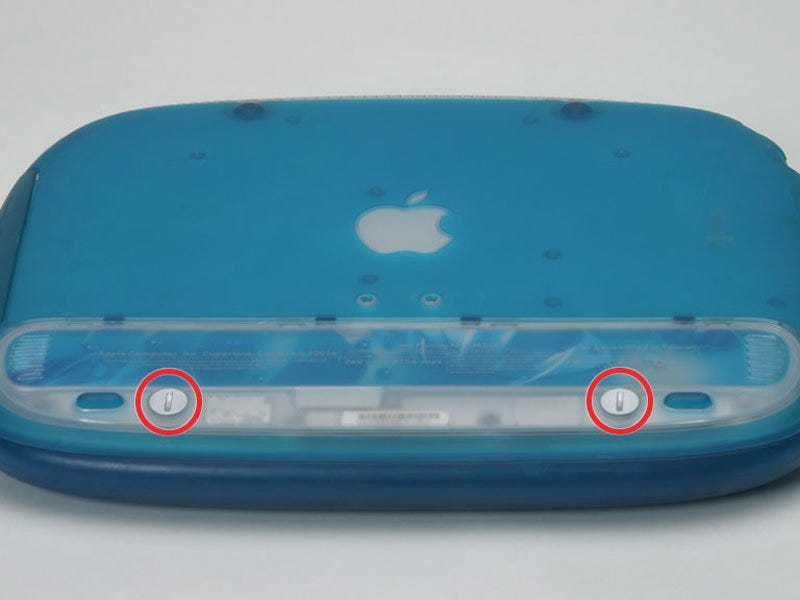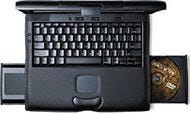Apple has changed... and not in a good way.
Apple of 2022 is not the same company it used to be. It has, to be frank, lost its way.
Back in 2007, “Apple Computer, Inc.” dropped the word “Computer” from their name. Becoming, simply, “Apple”.
Since then Apple has transformed, radically, into a company that is almost unrecognizable. Their approach to both hardware and software has changed so fundamentally that, if it were not for the big “Apple” logo on their products, you would be forgiven for not recognizing them as being made by the same company.
Unfortunately, these changes have not resulted in Apple making better products. The reality is quite the opposite. Any bright spots in the Apple product line is in spite of — not because of — Apple’s abandoning of what made them great in the past.
Let’s look through a handful of examples that showcase this dramatic shift.
Removable batteries (and more).
When was the last time you swapped out a battery on your iPhone, iPad, or MacBook?
Trick question. The answer is never. Because, in 2022, Apple doesn’t make any products with user replaceable batteries.
For newcomers to the Apple world, it may surprise you to learn that this “not user serviceable” aspect of Apple hardware is a very new invention.
Macintosh laptops used to go out of their way to make components — like batteries — easy to swap out. Some models, like the amazing Powerbook G3 “Wallstreet” models even allowed you to hot-swap multiple batteries (one on each side) by simply pulling on a lever.
Early iBook and MacBook models only required a single tool to replace a battery: A quarter.
Seriously. Many models of Mac laptops had a small knob designed to be turned with a coin… and — *plop* — out popped the battery.

This astounding level of user-serviceability extended well beyond the batteries.
Floppy drives, CD/DVD drives and more could all be swapped on many models of Powerbooks without using a single tool. And, on the early iBooks, you could remove the entire keyboard by simply pushing on two small tabs… giving you full access to the user-serviceable RAM, Hard drive, and (not joking) WiFi card.
Nowadays you can’t even upgrade your RAM on many Mac models at all. Want to swap out your battery? Tough luck.
Maybe you’re ok with this change. Maybe you feel there are tradeoffs that make this massive shift in approach to products worthwhile to you. But, one thing is certain, the difference between Apple in the year 2000 and Apple in the year 2022 — when it comes to user serviceability — is epic. It’s not even the same company. Not by a long shot.
Rip. Mix. Burn.
Back in the early 2000’s, Apple had a clear message to people:
When you buy something, it’s yours. And you should be able to enjoy it however you want.
And that included everything… even music.
In 2001, Apple introduced a model of the original iMac which contained a CD-RW drive. And, along with it, a new slogan: “Rip. Mix. Burn.”
The idea was simple. If you buy some music… you should be allowed to listen to it however the heck you want.
Rip the tracks off that audio CD. Create a new playlist of your favorite tunes. Then burn that back to a CD-R and listen to it wherever you want.
In their keynotes, Apple executives (including Steve Jobs) repeated — over and over again — that, when you buy music, it’s yours. Nobody should ever restrict how you enjoy it.
Fast forward to today… and the reality is wildly different.
So different, in fact, that Apple’s iTunes actively removes ripped MP3’s and replaces them with DRM-wrapped versions of the same songs. Which then restricts what you can do with them.
This new ethos of Apple — where you own nothing, and you’ll be happy about it — is seen throughout the Apple ecosystem. Don’t think that’s the case? Try making local-only backups of an application on your iPad. Or try copying an application you own from one iPhone/iPad to another.
Contrast that to how software was handled in the “Classic” days. How did you backup an application back then? Just, you know, copy it. Drag and drop from one location, or system, to the next. It just works. Didn’t even need to be “re-installed”. It’s yours. Use it how you want it.
That was always the Apple way.
But in 2022? Apple has changed their approach. Locked down. Controlled. Limited access. On everything from software and music.
Couldn’t be more difference.
GUI Automation Nirvana.
When Apple released MacOS System 7 back in the early 1990s, they included something truly amazing: AppleScript.
AppleScript is, at its core, an English-like programming language. What made AppleScript on MacOS absolutely amazing was how deeply connected it was throughout not just the built-in components of the operating system itself… but with the majority of third party applications published throughout the 1990s and 2000s.
Each application contained what was called an “AppleScript Dictionary”. That dictionary included a full list of every way that a script could interact with it… everything from “Selecting a menu item” to “Clicking a button” and beyond. For many applications… if something could be done by an end user (read: you), it could also be done via AppleScript.
In fact, those “Dictionaries” were so pervasive and common, that one could open the AppleScript Editor, hit the “Record” button, then go about using any number of applications on your system.
Create a new Word document, copy around some files via drag-and-drop, make some changes in an image editor, play a song.
Everything you did would be recorded — in human readable AppleScript — and could be saved, edited, and re-run at any time.
MacOS 7 through MacOS 9 were, to put it simply, an absolute nirvana for automating graphical applications. For pro-users, in a number of industries, it was a massive boost. Windows and Linux couldn’t even dream of this level of graphical automation.
Unfortunately, Apple has all but shelved this functionality.
For a short period of time, during the early “MacOS X”’ days, it looked like Apple would be increasing their investment with AppleScript and related tools. Unfortunately that time was very short lived.
In 2007 Apple completely eliminated the position that oversaw these tools. And, in the years since, has neglected to include or improve AppleScript Dictionaries in core applications. Third party support for the technology has all but disappeared as a result.
As of 2022, AppleScript still exists. The editor still ships with modern macOS. But it is an absolute shell of the beautiful automation suite it once was. And Apple has shown no interest in allowing iOS users to enjoy these tools. The writing on the wall is clear as day: that functionality is not long for this world.
We could go on-and-on.
These are but a few, obvious, examples of the dramatic change in Apple over recent years. We could go on for ages, showcasing the ways Apple has shifted not only in focus… but on core ethics, styles, goals, and standards.
Apple’s shift away from approachable (even to kids) software development with the killing of Hypercard.
Apple’s move away from truly portable system drives (you used to be able to simply copy over a few folders to a new drive and — shazam — you had a bootable MacOS drive that could be used on almost any Mac).
Apple’s de-simplification and de-modularization of the operating system (anyone remember Extensions and Control Panels that could be enabled and disabled with a drag and drop?) in favor of a larger, more complex, less modular system.
Apple’s move away from user interface customization.
In almost every case, when comparing “2022 Apple” to “2002 Apple” (or “1992 Apple”), there is an obvious core set of changes:
Less power, less flexibility, and less freedom for the computer user.
There are some bright spots.
Not all is doom and gloom with Apple. The company has, over recent years, done some very interesting things… particularly in the CPU space with their ARM-based Apple Silicon.
High performance with excellent battery life. That’s nothing to sneeze at.
No, sir.
And there have been a handful of interesting developments at Apple when it comes to application and game development as well. Those can, and should, be applauded.
Apple has lost its way.
Just the same, all of the benefits and good qualities of modern day Apple software and hardware could still be had… without having sacrificed the things that made Apple Computer products so interesting in years past.
It has become obvious that the leadership of Apple has forgotten what Apple is. Or, rather, what Apple was.
Or, heck, maybe those currently running the show simply never understood in the first place.
Regardless, it’s sad to see how Apple approaches their products — and their customers — in 2022. While I’ve always had criticisms of Apple (just like with any major company), it is truly sad to see the loss of the company they once were.
The world of computing is worse off because of that loss.







I would certainly agree that Apple's creation of eWaste is pretty alarming, yet I would still claim that they're the best option available for people. Most of their competitors have taken the same route, and the competitors' products typically do not last as long. Then, if you add that Apple just enabled serious encryption across their devices/services, this makes them far superior than most Windows devices, Android devices, and Amazon devices. If we add in the price to performance, and power to performance ratios that Apple's chips provide, I believe that Apple is a very clear winner. One piece of anecdotal data: the entry level Mac mini M1 (8 cores, 8GB RAM) beat my ThreadRipper 1950X (16 cores, 32 threads, 64GB RAM) in almost every task at a fraction of the cost in dollars and in power.
As regards the level of servicability and hackability of the hardware, I would argue that the only real options in this regard are home built PCs running some kind of Linux, or a Framework laptop. The Framework, however, has a somewhat high cost for what you're getting. At that price point, an M1 MacBook Air might be the better choice.
What I would really love is for Clockwork Pi to release an X86 SoM and then for drivers to magically manifest themselves for the device over in Haiku land.